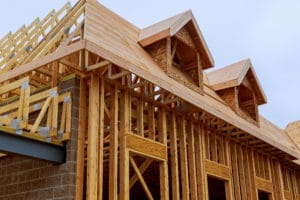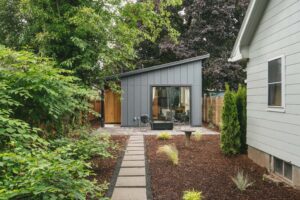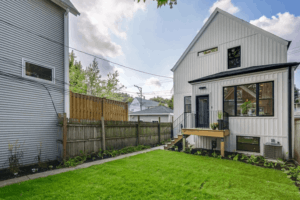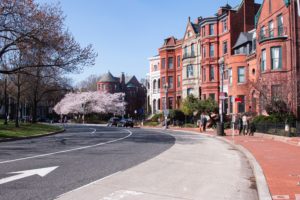The Dispatch: Want affordable housing? Build more homes.
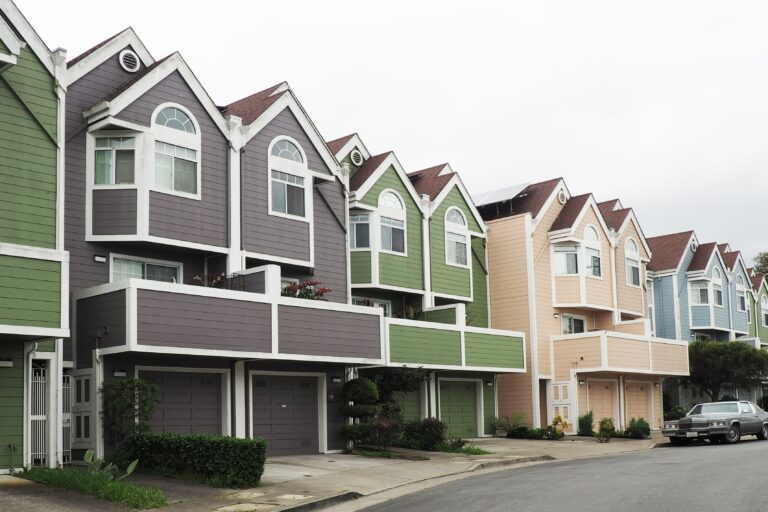
There is agreement today across the ideological spectrum that the cost of housing is too high. The share of all Americans paying more than 30, 40, or even 50 percent of their monthly income on housing has been growing for a very long time, and the cost of housing nearly everywhere has outpaced income growth year-over-year for decades.
One can marshal many alarming statistics about the cost of housing, but I will rely on an anecdote from my hometown of San Diego. In the 30-mile stretch between the coastal cities of La Jolla and Carlsbad—an area with about 300,000 residents—there is not a single detached home for sale this month under $1 million. Let that sink in.
The high cost of housing hits the poor hardest, of course. It tends to stop the young or unemployed from moving where better jobs are available. Homelessness is way up. Even among upper middle-class families, one now hears a common lament: Their kids and grandkids are moving away to places where they can afford an independent life. Housing costs are a problem.
Leftist activists frequently blame the problem on developers or capitalism while offering plans for more public housing, rent control, or command-and-control style mandates on builders to produce politically-favored forms of housing. In response, conservatives are reticent and sometimes defensive in discussions about housing affordability.
But a long time ago, the Reagan administration sought to lead the debate. A 1982 Presidential Commission on Housing identified regulation that blocked the production of housing as a primary source of the problem. It emphasized property rights, freedom in land use, and unleashing private enterprise to build homes as solutions.
Although much of the commission’s work has been ignored, many of its recommendations might achieve bipartisan support now. The Biden administration now notes that “the empirical literature finds [that] restrictive land use regulations [relate to] higher house prices.”
The way to make housing more affordable is to build more of it. Housing is scarce because laws have made so much of it illegal to build or created costly regulatory hurdles. Thus, Reagan’s plan asked: “How can government regulations be simplified, thus lowering the cost of housing?”
At the heart of its report, the commission proposed a radical simplification of land use laws, and the elimination of many laws. It recommended (among other ideas):
- That the density of home building be left to the marketplace, rather than central planning;
- Allowing more manufactured housing be built;
- Freedom to build (and live in) smaller homes;
- Repeal of laws forbidding property owners from converting farmland to housing;
- Fewer federal environmental regulations blocking the production of homes (particularly regulation under the Clean Water Act and Endangered Species Act);
- Simpler procedures for securing building permits from local governments.
Summarizing, the commission urged that “all decisions related to size of lot, size or type of housing, percentage of multifamily, or other housing types and locations … be left to the market” unless regulation was needed to protect a “vital and pressing governmental interest.” These are words that could be repeated today by cross-ideological members of the “Yes in My Backyard” (YIMBY) movement. They are also policies consistent with the principled defense of property rights that conservatives often profess.
Some of the commission’s strongest words pertained to the abuse of zoning laws, calling exclusionary zoning “one of the most indefensible” forms of regulation. In many counties, “large-lot” zoning outlaws building more than one home per acre. Some cities prohibit any multi-family homes, including modest apartment or condo buildings, except in small corridors of land. Elsewhere, building a manufactured home is illegal. To “protect property rights,” the commission recommended that:
“all State and local legislatures should enact legislation providing that no zoning regulations denying or limiting the developing of housing should be deemed valid [by courts] unless their existence or adoption is necessary to achieve a vital and pressing government interest. In litigation, the governmental body seeking to maintain or impose the regulation should bear the burden for proving it.”
A follow-on report commissioned by President George H.W. Bush’s Department of Housing and Urban Development in 1991 took even stronger aim at “exclusionary, discriminatory, and unnecessary government regulations at all levels [that] substantially restrict the ability of the private housing market to meet the demand for affordable housing.”
Some of the commission’s recommendations have in fact come to pass, with good effect. The commission recommended that building permit fees be charged in amounts no more than needed to offset the public costs of the proposed development, and not used as a novel form of tax for other general governmental purposes. The Supreme Court essentially ruled that this was mandated by the Constitution in Koontz v. St. Johns Water Management District (2013), litigated by my organization, Pacific Legal Foundation (PLF).
And 35 years before California (among other states) enacted state laws securing a homeowner’s right to build a “granny flat” or accessory dwelling unit alongside a primary residence, the commission encouraged the same. Since the reform in 2017, ADUs have accounted for tens of thousands of new homes in California and turned thousands of single-family homeowners into landlords and entrepreneurs with a stake in property rights and economic freedom. Similar trends appear to be occurring in Oregon and parts of other states where they are allowed.
But ADUs are just one of the many types of low-cost housing that were once common all over America and became increasingly illegal to build in most places during the past 70 years: single-room occupancy hotels, boarding houses, duplexes, triplexes, or four-plex units within residential neighborhoods, and apartment buildings, and large-scale suburban “greenfield” developments adequate to meet the demand for homes at every level of income.
The Reagan plan recognized that housing affordability was a problem because we made it illegal to build homes in the locations and varieties needed to serve people at all incomes. It recommended ways to undo the damage.
It remains true that the affordability crisis is almost entirely a function of regulation. We do not need rent controls, subsidies, or more government mandates to make housing more affordable. We need freedom in land use. Conservatives may find a path forward on the issue by looking back to the Reagan administration’s past, ignored ideas.
This op-ed was originally published by The Dispatch on September 20, 2021.






